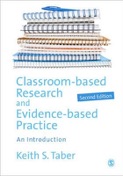Educational Research Methods

A site to support teaching and learning...

Triangulation

The term triangulation derived from a spatial metaphor - a method used when finding a location by observing from several vantage points
This is now applied to approaching the same research question using several sources of evidence. Triangulation requires redundancy in the information available.
“The term triangulation derives from the method of locating a beacon by finding its bearing from different locations: the several directions give limited information individually, but collectively establish the source of the signal. By analogy, the term is also used to describe a common approach to data collection in the social sciences (such as education). Triangulation is considered to be one of the criteria that marks out high quality studies ...” (Taber, 2008: 70)
Taber, K. S. (2008) Of Models, Mermaids and Methods: The Role of Analytical Pluralism in Understanding Student Learning in Science, in Ingrid V. Eriksson (Ed.) Science Education in the 21st Century, pp.69-106. Hauppauge, NY: Nova Science Publishers.
There are different kinds of triangulation.
Methodological triangulation:
combining different research techniques to address the same question:
e.g. combining observation data with interview data
e.g. combining life-history interviews with documentary analysis
“In methodological triangulation, different sources of data are collected...For example, a teacher may be interviewed about her teaching, but the interview data is compared to that from other interviewees (e.g. her students and colleagues), observations of her teaching, examination of the comments she makes on student work etc... The assumption is that an informant, even an honest informant, will have biases, and will have access to only some of the relevant perspectives, and so sound conclusions can only be drawn from evidence that is corroborated from several data sources. Triangulation is primarily used, then, due to considerations of validity - for the purpose of raising the ‘trustworthiness’ of interpretations” (Taber, 2008: 70-71)
Taber, K. S. (2008) Of Models, Mermaids and Methods: The Role of Analytical Pluralism in Understanding Student Learning in Science, in Ingrid V. Eriksson (Ed.) Science Education in the 21st Century, pp.69-106. Hauppauge, NY: Nova Science Publishers.
Data triangulation:
combining different data sources, obtained by the same research techniques
e.g. interviewing different informants;
e.g. interviewing the same person in different contexts, or at different times
Sometimes triangulation may be understood in terms of using multiple researchers; or analysing data according from multiple theoretical perspectives.
This is a personal site of Keith S. Taber to support teaching of educational research methods.
(Dr Keith Taber is Professor of Science Education at the University of Cambridge.)
2016
